Editor's note: This piece was written in anticipation of a potential Francisco Lindor trade -- and has also been updated to include the Colorado Rockies' trading Nolan Arenado to the St. Louis Cardinals.
Now that Cleveland has traded Lindor to the Mets, he would supplant Rocky Colavito as the biggest star the franchise has traded away. Since Lindor's first full season in 2016, he ranks fifth among position players in bWAR while making four All-Star team, winning two Gold Gloves and finishing in the top 10 of the MVP voting three times. At 27, he's also in the prime of his career.
The most infamous trade in Cleveland Indians history involved a prodigious young slugger, a batting champion, a general manager nicknamed Trader Frank and, in a roundabout way, Terry Francona's father. It took place 60 years ago, shocked fans in Cleveland and, some would say, cursed the franchise for the next three decades.
Rocky Colavito led the American League with 42 home runs in 1959 and finished fourth in the MVP voting. He was 26 years old. Two days before the start of the 1960 season, Frank Lane traded the handsome fan favorite to the Detroit Tigers for Harvey Kuenn, who had won the 1959 batting title with a .353 average.
"We've given up 40 home runs for 40 doubles. We've added 50 singles and taken away 50 strikeouts," Lane explained. He said he had traded hamburger for steak. Tigers general manager Bill DeWitt gloated, "I like hamburger."
Bill James once speculated that Lane made the trade because he believed Tito Francona could replace Colavito as a matinee idol. Francona had come over in another trade with Detroit prior to 1959 and hit .363, although he didn't play enough to qualify for the batting crown.
"Francona looked like a movie star," James wrote. "Frank Lane didn't realize that the Cleveland public would turn on him for trading Colavito, in part because he thought Francona could step in for him with that audience."
It would turn out to be a disastrous trade. Kuenn was three years older than Rocky. Colavito was the superior outfielder, with one of the best throwing arms in the game. Over the next seven seasons, only Harmon Killebrew would hit more home runs in the American League. Kuenn lasted one season in Cleveland as the team fell under .500 and attendance dipped by a third. Lane took a job running the Kansas City A's. In 1994, Terry Pluto wrote a book titled "The Curse of Rocky Colavito: A Loving Look at a Thirty-Year Slump."
Colavito arguably remains the best player the Indians have ever traded -- although it is a crowded field that includes Roberto Alomar, Kenny Lofton, CC Sabathia and Cliff Lee. As talented as that group is, however, if the Indians trade Francisco Lindor this offseason, he probably jumps to the top of the list. Since his first full season in 2016, Lindor ranks fourth among position players in WAR. With Lindor heading into his final season before free agency, due to earn an estimated $22 million in arbitration and beyond Cleveland's budget for a long-term contract, a trade appears likely.
The possibility of a Lindor trade, or the Rockies trading Nolan Arenado, got me wondering about the best player every franchise has traded, somebody like Lindor: in the prime of his career, a star- or superstar-level player, not the Tigers trading away John Smoltz as a minor leaguer or the Giants trading an over-the-hill Willie Mays.
So this isn't necessarily a compilation of the best and worst trades for each team. A few of these deals worked out. More of them did not and perhaps there is a lesson in that. Teams often made these trades for financial reasons. In fact, as we take a stroll through baseball history, we will discover the consistent grip that money and contracts have held over the game and their influence on the decisions of front offices.
To the trades ...
Jump to a team:
AMERICAN LEAGUE
BAL | BOS | CHW | CLE | DET | HOU | KC | LAA | MIN | NYY | OAK | SEA | TB | TEX | TOR
NATIONAL LEAGUE
ARI | ATL | CHC | CIN | COL | LAD | MIA | MIL | NYM | PHI | PIT | SD | SF | STL | WSH

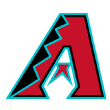
Arizona Diamondbacks
The trade: Curt Schilling to the Red Sox for Casey Fossum, Brandon Lyon, Jorge De La Rosa and Mike Goss (Nov. 28, 2003)
Others to consider: Randy Johnson, Paul Goldschmidt
After winning the World Series in 2001 and 98 games in 2002, the Diamondbacks fell to 84-78 in 2003 as co-aces Schilling and Johnson both missed time with injuries, combining for just 42 starts. Schilling had won 45 games in 2001 and 2002 but went 8-9 in 2003, albeit with a 2.95 ERA and 194 strikeouts in 168 innings. He and Johnson ranked 1-2 in the majors in pitching WAR from 2001 to '03. Nonetheless, ownership ordered the payroll trimmed from $94 million to $80 million for 2004, and the front office put Schilling on the block. The problem: Schilling had a no-trade clause and said he would accept a trade only to the Phillies or Yankees.
Enter Red Sox wunderkind GM Theo Epstein, then entering his second season with the Red Sox. He met with Schilling over Thanksgiving -- including having dinner with Schilling's family -- to discuss a contract extension. Epstein left the dinner without a deal in place.
"Their pitch was, 'This is as far as we're going to be able to go,'" Schilling said at the time. "And when I looked at it, it was unacceptable, and I told them I'd gone as far as I could go too. To me, at the time, it was clear from Theo's body language that this probably wasn't going to happen."
They agreed to extend the negotiating window another 24 hours and came to an agreement. Schilling approved the trade.
Did the trade pan out? Not for the Diamondbacks. Fossum and Lyon were young major leaguers but without much upside. De La Rosa was flipped to the Brewers in a multiplayer trade that sent Richie Sexson to Arizona (he got injured, played 23 games, then signed with Seattle as a free agent). The 2004 Diamondbacks collapsed to 51-111 and Arizona traded Johnson to the Yankees.
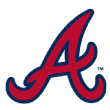
Atlanta Braves
The trade: Rogers Hornsby to the Cubs for $200,000 and five nondescript players (Nov. 7, 1928)
Others to consider: Wally Berger, Joe Torre, David Justice, Mark Teixeira, Andrelton Simmons
I hate to dig back into Boston Braves history, but there is no clear top candidate from Atlanta history, so we turn to one of the greatest hitters in baseball history -- and also a player Bill James once called the most controversial in baseball history. Despite his prowess at the plate, Hornsby was traded three years in a row. The Cardinals shipped Hornsby, who had just won the World Series as player/manager, to the Giants after the 1926 season, after owner Sam Breadon tired of Hornsby's contract demands and trips to the horse tracks. He lasted one season with the Giants but didn't get along with manager John McGraw and was on the wrong end of a lawsuit from a bookie claiming Hornsby owed him $70,000 in unpaid horse-racing bets.
McGraw happily dumped him on the Braves -- the cash-poor Braves, who had finished in seventh place in 1927 and last in the league in attendance. Hornsby immediately went to his old ways, including undermining manager Jack Slattery. He would sit by himself during pregame strategy sessions, criticize Slattery and refer to him as "that dumb collegiate coach out there," according to one Braves player. Slattery resigned in May, and owner Emil Fuchs made Hornsby the manager.
Hornsby hit .387/.498/.632, leading the NL in all three categories, a 9.0-WAR season, according to modern metrics. The Braves, however, were even worse than the year before, money remained a problem, and as the season neared its end, it became clear Fuchs would have to trade his star. During a Cubs-Braves series in September, Hornsby even lobbied Cubs manager Joe McCarthy in hopes that the Cubs would arrange a trade for him.
They did, with the $200,000 in cash a record amount at the time. Hornsby's claim that he would win the Cubs the pennant proved correct. He had his last great season in 1929, hitting .380 with 39 home runs and 149 RBIs to win MVP honors (although the Cubs lost the World Series).
Did the trade pan out? Not really. While the Braves inched over .500 in 1933 and 1934 under Hall of Fame manager Bill McKechnie, Fuchs' money issues continued, and by 1935 he could no longer afford the rent on Braves Field and was forced to sell the team.
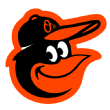
Baltimore Orioles
The trade: Manny Machado to the Dodgers for five minor leaguers (July 18, 2018)
Others to consider: Frank Robinson, Eddie Murray
The Machado trade happened fairly recently, so we remember the circumstances: The Orioles were floundering, Machado was heading to free agency, they weren't going to re-sign him. The more interesting question: Was Machado a better player at the time of his trade than Hall of Famers Murray and Robinson? (Fun side note: All three were traded to the Dodgers.)
The Robinson deal was fairly surprising at the time since he had just finished third in the 1971 MVP vote after hitting .281/.384/.510 (3.3 WAR) as the Orioles won a third straight pennant. The WAR figure suggests Robinson wasn't really the third-best player in the league, which the Orioles accurately assessed at the time. He also was turning 36 and had a big salary, and Don Baylor was ready to step in. The O's made a good trade, acquiring Doyle Alexander. Murray was traded after the 1988 season, the year the Orioles lost their first 21 games. Murray hit .284/.361/.474 (3.2 WAR), which was good for a 136 OPS+ in a tough offensive environment. The Orioles acquired Ken Howell, Brian Holton and Juan Bell, none of whom did much in Baltimore. Machado, meanwhile, had a down year in 2017 (3.8 WAR) but would be worth 5.8 WAR over the entire 2018 season. He also was much younger than Robinson and Murray, still in his prime with many good seasons ahead.
Certainly, Robinson is an inner-circle Hall of Famer, and both Robinson and Murray would rate higher than Machado on a list of greatest Orioles, but Machado gets the nod as the best player at the time he was traded.
Did the trade pan out? Too early to tell. Yusniel Diaz was the top prospect acquired, and the Orioles just added him to their 40-man roster. Dean Kremer has a chance to pitch in the 2021 rotation.
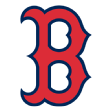
Boston Red Sox
The trade: Babe Ruth to the Yankees for $100,000 (Dec. 26, 1919)
Others to consider: Tris Speaker, Reggie Smith, Fred Lynn, Nomar Garciaparra, Manny Ramirez, Adrian Gonzalez, Mookie Betts
No team, with the possible exception of the A's, has traded away as many superstars and franchise icons as the Red Sox. It comes down to Ruth versus Betts, however, and there is, I suppose, an argument against the Babe. Betts had been the 2018 AL MVP with one of the best seasons in Red Sox history. He followed up with another outstanding season in 2019, and his two-season WAR before the trade was 17.5. Ruth's two-season WAR was 13.8 for hitting and 3.1 for pitching. Both were short seasons due to World War I, however, with the Red Sox playing 126 games in 1918 and a 140-game schedule in 1919.
The rest of the argument goes like this: Even though Ruth had set the single-season home run record in 1919 with 29 (while leading the AL in runs, RBIs, OBP and slugging), the Red Sox had no way of knowing that he was just beginning his onslaught on the record books. It was also clear that Ruth's days as a pitcher were nearing an end (in part because Ruth didn't want to pitch anymore). In 1916, Ruth had pitched 323 innings and averaged 4.7 strikeouts per nine innings pitched. In 1919, pitching on a part-time basis, he made 15 starts and averaged just 2.0 strikeouts per nine. His fastball had lost its zip.
Red Sox owner Harry Frazee needed cash -- he also secured a $300,000 loan from the Yankees as part of the deal, using Fenway Park as collateral (Yankees co-owner Jacob Ruppert would hold the mortgage on the ballpark) -- but attempted to explain away the sale of Ruth for baseball reasons.
"While Ruth, without question, is the greatest hitter that the game has ever seen, he is likewise one of the most selfish and inconsiderate men that ever wore a baseball uniform," Frazee said. "Had he possessed the right disposition, had he been willing to take orders and work for the good of the club like the other men on the team, I would never have dared let him go." Frazee added that home runs were "more spectacular than useful."
Did the trade pan out? It did not. After agreeing to the deal with the Yankees, Frazee met with his manager, Ed Barrow, to tell him the news. "I thought as much," Barrow replied. "I felt it in my bones. You're making a mistake, Harry. You know that, don't you?" The Babe, owed $10,000 on his contract for the next two seasons, immediately managed to rework a new deal with the Yankees, extracting an extra $21,000 over the two years. The New York Times published an editorial with the headline, "The High Price of Home Runs."
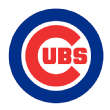
Chicago Cubs
The trade: Fergie Jenkins to the Rangers for Bill Madlock and Vic Harris (Oct. 25, 1973)
Others to consider: Billy Herman, Hack Wilson, Bruce Sutter, Lee Smith
The Cubs have no obvious No. 1 trade here, although all five players listed above are Hall of Famers. It is also interesting that despite their long decades of misery, the Cubs have probably made more good trades than bad ones (maybe because they didn't have enough good players to trade away). Everyone remembers Lou Brock, who was traded before he became a star, and they traded Dennis Eckersley to Oakland, where he became a Hall of Fame reliever. But look at all the good trades the Cubs made to acquire young players: Ryne Sandberg, Sammy Sosa, Aramis Ramirez, Derrek Lee, Anthony Rizzo, Jake Arrieta, Kyle Hendricks -- not to mention Jenkins, acquired from the Phillies early in his major league career. In none of those deals did the Cubs give up anybody of much value.
Jenkins had won the Cy Young Award in 1971, although he went 14-16 with a 3.89 ERA in 1973, prompting the deal for Madlock, who had hit .338 with 22 home runs at Triple-A for the Rangers.
Did the trade pan out? Sort of. Madlock hit .313 as a rookie, then won batting titles in 1975 and 1976. The Cubs then traded him for a past-his-prime Bobby Murcer. Jenkins had a big comeback season for Texas in 1974 (25 wins) and still had 135 wins left in him.
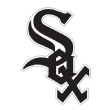
Chicago White Sox
The trade: Chris Sale to the Red Sox for Yoan Moncada, Michael Kopech, Luis Alexander Basabe and Victor Diaz (Dec. 6, 2016)
Others to consider: Luis Aparicio, Minnie Minoso, Rich Gossage
Most of the memorable trades in White Sox history involve trading for future stars while they were still unproven young players (Nellie Fox, Billy Pierce, Paul Konerko), trading away future stars (Sammy Sosa, Fernando Tatis Jr.) or trading for established stars (Eddie Collins, Joe Jackson, Jim Thome). When the White Sox traded Sale after the 2016 season -- despite a team-friendly contract that still had three years to go -- it was an acknowledgement that the team was stuck in neutral after four straight losing seasons and that a full-scale rebuild was necessary.
Sale had finished in the top six of Cy Young voting five seasons in a row. The White Sox picked up Moncada, then regarded as the top prospect in the game, and Kopech, one of the top pitching prospects. "That's a blockbuster," Yankees GM Brian Cashman said at the time. "It was a 'wow.' Obviously, they gave up a lot and they got a lot. Boston's like the Golden State Warriors now in baseball."
Did the trade pan out? You can call it a win for both sides. Sale helped the Red Sox win the World Series in 2018, while Moncada had a breakout 2019 season. He did struggle in 2020 after recovering from the effects of a COVID-19 infection, and the White Sox are still waiting on Kopech, but there is still a lot of potential upside to come for Chicago.
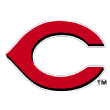
Cincinnati Reds
The trade: Frank Robinson to the Orioles for Milt Pappas, Jack Baldschun and Dick Simpson (Dec. 9, 1965)
Others to consider: Johnny Cueto
Robinson hit .296 with 33 home runs and 113 RBIs in 1965 but turned 30 that August, prompting Reds owner and general manager Bill DeWitt to describe him as "an old 30." DeWitt was wrong. The Reds won 89 games in 1965, finishing eight games out of first place, but after they led the league in runs scored (117 more runs than No. 2 Milwaukee) and finishing near the bottom in runs allowed, DeWitt figured they needed some pitching help. Indeed, the Reds had two 20-game winners in 1965, but the back of the rotation was weak. Pappas was a 27-year-old right-hander who already had 110 career wins and was coming off back-to-back seasons with a sub-3.00 ERA. At first glance, the trade makes sense. By modern evaluation methods, however, the two players were not close in value. Robinson is valued at 12.5 WAR over 1964 and '65, with Pappas at 6.3. (Simpson was a 22-year-old outfielder who never hit in the majors, and Baldschun had been a decent reliever but wound up pitching just 70 innings with the Reds.)
Did the trade pan out? This trade is often mentioned as one of the worst of all time, but that isn't fair. Yes, it clearly worked out for Baltimore as Robinson won the Triple Crown in 1966 and led the Orioles to the World Series title (and another one in 1970). But this wasn't Lou Brock for Ernie Broglio, as Pappas did win 99 more games in the majors. Robinson wins easily in future value, with 43.5 WAR to 23.4, but it's not like Pappas was a washout. Pappas went 30-29 with a 4.04 ERA in two-plus seasons with the Reds before they traded him, getting Clay Carroll as part of the return. Carroll became a top reliever in his eight seasons with the Reds (71-43, 2.73 ERA).
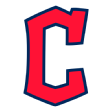
Cleveland Indians
The trade: Rocky Colavito to the Tigers for Harvey Kuenn (April 17, 1960)
Editor's note: Now that Cleveland has traded Lindor to the Mets, he supplants Colavito as the biggest star the franchise has traded away. Since Lindor's first full season in 2016, he ranks fifth among position players in bWAR while making four All-Star team, winning two Gold Gloves and finishing in the top 10 of the MVP voting three times. At 27, he's also in the prime of his career.
Others to consider: Larry Doby, Dennis Eckersley, Kenny Lofton, Roberto Alomar, CC Sabathia, Cliff Lee
The Colavito trade would be the final blemish on a string of bad decisions Frank Lane made in his three years running the Indians. In June 1958, he traded Roger Maris to the A's. In August, he waived future Hall of Fame reliever Hoyt Wilhelm, even though Wilhelm had a 2.49 ERA at the time. (Wilhelm pitched 14 more seasons with a 2.29 ERA.) Five days before the Colavito trade, Lane dealt Norm Cash to the Tigers for Steve Demeter. Cash would go on to hit 373 home runs for Detroit, while Demeter had just five more at-bats in the majors. In 1961, Maris, Cash and Colavito combined for 147 home runs.
"Frank Lane was a great trader," longtime executive Buzzie Bavasi once said. "But when I say that, I don't mean the trades he made were great."
That's not exactly fair. As general manager of the White Sox from 1948 to 1955, Lane made an astonishing 241 trades, earning him his various nicknames, including Trader Frank and Frantic Frank. He did turn the franchise around, from a perennial loser into a winner. Among his trades were acquiring Nellie Fox, Billy Pierce and Minnie Minoso as young players. But as authors Mark Armour and Daniel Levitt wrote, "After his early success, Lane seemed to have become so enamored with his own genius that he made trades for the sake of creating news." During his short tenure as GM of the Cardinals, he tried to trade Stan Musial, only to have ownership block that idea.
Lane often receives blame for the demise of the Indians from their 1950s heyday, but the franchise was already starting to decline when he replaced Hank Greenberg. After the Colavito trade, Cleveland was stuck in mediocrity throughout the 1960s, usually finishing right around .500, and you have to wonder how things would have turned out with Colavito, Cash and Maris in the lineup.
Did the trade pan out? No. There's a reason this trade lives on as a pivotal moment in Indians franchise history, six decades later. Kuenn hit .308 with nine home runs in his one season with Cleveland, after which the new GM traded him to the Giants for outfielder Willie Kirkland, who had one good season, and washed-up pitcher Johnny Antonelli.

Colorado Rockies
Editor's note: The Nolan Arenado trade now surpasses the Holliday deal. While Arenado had a subpar 2020 due to a shoulder injury, from 2015 to 2019 he ranked third among all position in players in WAR and finished in the top eight of the MVP each season while averaging 40 home runs and 124 RBIs - not to mention his eight Gold Gloves in eight seasons. He was on pace to challenge Walker and Todd Helton as the greatest player in Rockies history.
The trade: Matt Holliday to the A's for Carlos Gonzalez, Huston Street and Greg Smith (Nov. 10, 2008)
Others to consider: Troy Tulowitzki
Hall of Famer Larry Walker was 37 and nearing the end of his career when the Rockies traded him, so this choice comes down to Holliday or Tulowitzki. Tulo was on pace for his best season in 2014, the season before the Rockies traded him to the Blue Jays, before undergoing hip surgery in July and missing the rest of the season. He returned in 2015 and was hitting .300/.348/.471 at age 30, but as it turned out, the Rockies traded him at the right time, as injuries resurfaced.
Holliday had been second in the MVP voting in 2007 and had another All-Star season in 2008 when the Rockies decided to trade him as he entered his walk year. With Scott Boras representing him, the Rockies had little hope in signing Holliday to a long-term deal. A potential trade with the Cardinals that centered on Ryan Ludwick (who had hit 37 home runs in 2008) broke down and the Rockies turned to the A's.
Did the trade pan out? Yes. The Rockies, World Series participants in 2007, returned to the playoffs in 2009, and Gonzalez produced 23.7 WAR with Colorado. Street had three good seasons as the Rockies' closer before he was traded to the Padres (a deal that did not work out). The A's, meanwhile, traded Holliday to the Cardinals at the deadline in 2009 and Holliday would eventually sign a long-term deal to stay in St. Louis. (For comparison's sake, Gonzalez accumulated his WAR over 10 seasons with the Rockies, with 17.0 coming in his best four seasons from 2010 to '13. Holliday was worth 5.3 WAR in his Oakland/St. Louis season and then 20.7 in his seven seasons after signing with St. Louis.)
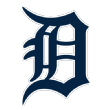
Detroit Tigers
The trade: Justin Verlander to the Astros for Franklin Perez, Daz Cameron and Jake Rogers (Aug. 31, 2017)
Others to consider: Ty Cobb, Hank Greenberg, Jim Bunning
The most infamous trade in Tigers history came when they dealt a Double-A pitcher with a 5.68 ERA named John Smoltz. (Hey, at least Doyle Alexander helped the Tigers win the AL East in 1987.) Smoltz doesn't qualify, since he was an unproven minor leaguer, but we do have three other Hall of Famers and one future Hall of Famer to choose from. All four were in their 30s when traded but were still quality players. Let's consider the four deals:
• Verlander (34 years old): He had finished second in the 2016 Cy Young voting, and while he had a 3.82 ERA when he was traded, that was with a terrible defensive team that was playing Nicholas Castellanos at third base, J.D. Martinez in right field and Mikie Mahtook in center field. Verlander raised his game to another level in Houston.
• Bunning (32): A five-time All-Star when traded, Bunning had a mediocre 1963 season, going 12-13 with a 3.88 ERA and serving up a league-worst 38 home runs. He still had 106 wins left in him, however, and went 74-46 with a 2.48 ERA in his first four years with the Phillies after leaving Detroit.
• Greenberg (36): Greenberg had just turned 36 when the Tigers traded him following the 1946 season, but he had just led the AL with 44 home runs and 127 RBIs. He played one season with Pittsburgh and retired.
• Cobb (40): OK, he was old, but Cobb had just hit .339 in 1926 (with just two strikeouts in 79 games) and led the AL in OPS in 1925. He could still hit and batted .357 and .323 in two seasons with the A's.
I'm going with Verlander -- better than Bunning and younger than Greenberg and Cobb, and as he showed, still at his peak until finally breaking down in 2020.
Did the trade pan out? Doesn't look like it will, although all three players Detroit got are on the 40-man roster. Perez has had trouble staying healthy and has yet to advance past Class A. Cameron did play in the majors in 2020 but projects as a backup outfielder. Rogers hit .125 in 35 games with Detroit in 2019.
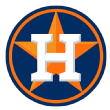
Houston Astros
The trade: Joe Morgan, Jack Billingham, Cesar Geronimo, Denis Menke and Ed Armbrister to the Reds for Lee May, Tommy Helms and Jimmy Stewart (Nov. 29, 1971)
Others to consider: Rusty Staub, Ken Caminiti
The Astros have a fascinating trade history, with a number of lopsided deals on both sides of the ledger. On the plus side, they acquired Jose Cruz, Joe Niekro, Dickie Thon, Mike Scott, Jeff Bagwell, Mike Hampton, Moises Alou, Justin Verlander and Gerrit Cole -- a roll call of many of the greatest players in Astros history -- without giving up anybody of significance. Those nine players combined for nearly 250 WAR with the Astros, and the best asset they gave up was Ken Forsch, who had just 8 WAR remaining in his career. Heck, Cruz and Niekro were simple cash purchases. On the other hand, they also gave away Kenny Lofton and Curt Schilling as young players.
The Astros joined the National League in 1962 and, under the guidance of Paul Richards and Tal Smith, built one of the best player development systems in the majors. Spec Richardson, originally the club's business manager, took over as GM in 1967. The Astros had developed Morgan, Staub, Jimmy Wynn, Larry Dierker and Dave Giusti, with Bob Watson, Don Wilson and Doug Rader in the minors, and finally seemed ready to contend. After the 1968 season, however, Richardson traded Staub and Mike Cuellar (who won the 1969 AL Cy Young Award for the Orioles and would average 21 wins the next six seasons) and got little in return.
Then came the Morgan trade after the 1971 season. Astros first basemen had hit just nine home runs in the cavernous Astrodome, so Houston was looking for power, and May had hit 39 home runs for the Reds that season. Morgan, meanwhile, was not a favorite of Astros manager Harry Walker, who branded him a troublemaker. Indeed, the headline in the Cincinnati Enquirer following the deal was "Morgan No Troublemaker." Morgan said the Astros wanted to break up him and Wynn, and blamed Walker. "It seemed like anyone who was friendly with Jimmy was labeled a troublemaker," Morgan said. "Well, I was friends with him before Harry got to Houston and I'll be friends with him when Harry's gone." It was still a time when managers wielded a lot of power, often to the detriment of the organization.
Richardson also simply underrated Morgan's value. He produced consistently high on-base percentages, stole 40-plus bases every year at a high success rate and even managed to hit 13 home runs in 1971, which led the team. Speaking of Walker, Morgan said, "He told the press that I did a good job of getting on base and stealing second but asked what I did after that."
The Reds were also reportedly unhappy that May was playing on the club's offseason basketball team, against the wishes of GM Bob Howsam. (Understandable, given that star center fielder Bobby Tolan blew out his Achilles playing on the team and missed the entire 1971 season. In fact, speculation at the time was that the Reds might also trade Pete Rose, another member of the basketball team.) The Reds wanted to move Tony Perez off third base and knew Morgan was a more complete player than May.
"Sure, we're giving up power, but I think this trade gives us the chance to play more actual baseball," Reds manager Sparky Anderson said. "There's a lot more to baseball than hitting home runs. Morgan is the key man. I look for him to steal 50 bases."
Did the trade pan out? Nope. Leaving the Astrodome allowed Morgan to flourish. He became the best player in baseball the next five years, averaging 9.6 WAR and winning MVP honors in 1975 and 1976. Richardson didn't even need to make the trade to add a big bat. The Astros' top prospect was first baseman John Mayberry, but he was traded to the Royals a few days after the Morgan trade. He was a monster the next four seasons, hitting .277/.399/.493 -- much better than May hit. Instead of a potential championship lineup built around Morgan, Wynn, Mayberry and Cesar Cedeno, the Astros remained stuck around .500 until 1979.
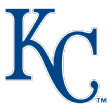
Kansas City Royals
The trade: David Cone to the Blue Jays for Chris Stynes, Tony Medrano and Dave Sinnes (April 6, 1995)
Others to consider: Carlos Beltran, Zack Greinke
This is a good debate because you have two likely Hall of Famers traded in their prime and a third who was one of the biggest stars in the game in the 1990s. All three trades came during that long, bleak era from 1995 to 2012 when the Royals had just one winning season -- an era, really, that began when the Royals traded Cone after he had won the Cy Young Award in the strike-shortened 1994 season.
Cone went 16-5 with a 2.94 ERA in '94, was coming off seasons of 7.2 and 6.9 WAR (second in the majors behind Greg Maddux over those two seasons) and had helped the Blue Jays win the World Series in 1992. With one year remaining on his contract and with the Royals reporting losses of $25 million in 1994, general manager Herk Robinson explained, "We felt at the end of the year we would be incapable of signing him, and rather than getting nothing for him, hopefully we got several guys who will be with us for a long time."
Likewise, the Royals traded Beltran and Greinke before they could run off into free agency. Beltran was headed for his fifth 100-RBI season in 2004 and would end up mashing 38 home runs and stealing 42 bases between the Royals and Astros, so he was certainly a terrific all-around player. Greinke had won the 2009 Cy Young Award, but he had just that one monster season under his belt when he was traded to Milwaukee in December 2010, so we didn't yet know that he would build a Hall of Fame career.
Did the trade pan out? Umm, not quite. Stynes played 58 games for the Royals. The other two guys never reached the majors. The Royals fell from 64-51 in the strike season to 70-74 in 1995 and never recovered until, really, the Greinke trade, which brought in Lorenzo Cain, Alcides Escobar and Jake Odorizzi and helped set the Royals on the path toward becoming World Series champions in 2015.
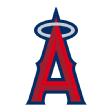
Los Angeles Angels
The trade: Jim Edmonds to the Cardinals for Kent Bottenfield and Adam Kennedy (March 23, 2000)
Others to consider: Andy Messersmith, Bobby Bonds, Jim Abbott
The Angels have always been about bringing in stars, whether via trade (Frank Robinson, Bobby Bonds, Rod Carew, Fred Lynn, Dave Winfield, Andrelton Simmons, Justin Upton) or free agency (Bobby Grich, Reggie Jackson, Mark Langston, Vladimir Guerrero, Albert Pujols, Josh Hamilton, Anthony Rendon), more than sending them away. We'll go with Edmonds here, at least until another center fielder is traded to the Yankees in 2022.
Edmonds averaged 4.7 WAR and 28 home runs while winning two Gold Gloves from 1995 to 1998, but he played just 55 games in 1999 after having shoulder surgery. Late in spring training, GM Bill Stoneman, with Edmonds heading into free agency at the end of the season, traded him for some much-needed pitching help. Bottenfield had won 18 games in 1999 and made the All-Star team but hadn't done much before that season. The weird thing is that the coverage in the Los Angeles Times referred to Edmonds as "enigmatic" and "erratic," and one writer mentioned an Angels career marked by "spectacular defensive plays, unfilled promise and never-ending trade rumors." Edmonds had hit between .290 and .307 from '95 to '98, so that erratic label makes no sense, at least from the perspective of 2020. Cardinals GM Walt Jocketty soon signed Edmonds to a long-term deal and called him one of the best players in baseball.
Did the trade pan out? If we're being generous, yes. Bottenfield was a flop and was traded away a few months later. But Kennedy was the starting second baseman on the 2002 World Series winners and played seven years with the Angels. Edmonds, however, had a great run with the Cardinals over the next six seasons, hitting .292/.406/.584 and averaging 6.1 WAR per season.

Los Angeles Dodgers
The trade: Mike Piazza and Todd Zeile to the Marlins for Gary Sheffield, Bobby Bonilla, Charles Johnson, Jim Eisenreich and Manuel Barrios (May 14, 1998)
Others to consider: Dick Allen, Bob Welch, Gary Sheffield
Trading Piazza remains perhaps the most unpopular move in Dodgers history, a megadeal influenced by money, ego and entertainment executives who were the team's new owners. The Marlins didn't even want Piazza, trading him a week later to the Mets. While Piazza went on to flourish in New York, the deal remains controversial and leaves Dodgers fans bitter to this day. Piazza, after all, wears a Mets cap on his Hall of Fame plaque.
The background: Piazza was the best-hitting catcher in major league history, coming off a second-place finish in the 1997 MVP voting after hitting .362 with 40 home runs. Heading into free agency after 1998, he was reportedly seeking the biggest contract in MLB history, a seven-year, $100 million deal. Fox Entertainment Group had just purchased the Dodgers from the O'Malley family and had different thoughts, with a final offer of six years and $79 million. As contract talks stalled, trade talks began -- except it wasn't general manager Fred Claire who made the deal or even Peter O'Malley, who had remained as team president. Instead, Bob Graziano, a longtime aide to O'Malley, brokered the transaction along with Chase Carey, chairman of Fox Television.
The Dodgers acquired three All-Stars in Sheffield, Bonilla and Johnson, taking on $83 million in salary (not including the extra $10 million Sheffield negotiated as compensation for waiving his no-trade clause). "The Dodgers made a business decision, and I accept and understand that," Piazza said. "Now I just want to concentrate on giving 150 percent to the Marlins."
Did the trade pan out? Well, if you assume Piazza was going to leave anyway, acquiring Sheffield in the Marlins' fire sale was a good result. He was in the first year of a six-year contract and would produce 17.1 WAR in four seasons with the Dodgers. He then was traded for Brian Jordan (4.3 WAR in two seasons) and Odalis Perez, who had a couple of good seasons with L.A. The Dodgers also got Andrew Brown in that trade, and he was later traded with Franklin Gutierrez for Milton Bradley, and Bradley was later traded for Andre Ethier, who played 12 seasons for the Dodgers. So via an extended trade tree, the Dodgers did extract a lot of value from Piazza. On the other hand, they didn't make the playoffs again until 2004 (the year Fox sold the team) and, after trading Piazza because of money, then signed Kevin Brown that offseason to a $105 million contract. Go figure.
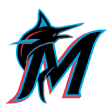
Miami Marlins
The trade: Giancarlo Stanton to the Yankees for Starlin Castro, Jorge Guzman and Jose Devers (Dec. 11, 2017)
Others to consider: Kevin Brown, Gary Sheffield, Mike Piazza, Josh Beckett, Miguel Cabrera
The Marlins certainly have an interesting trade history -- or perhaps "depressing" is the correct description. The above list doesn't even include Christian Yelich (who became an MVP after being traded), other players from the 1997 fire sale (Moises Alou, Al Leiter), Derrek Lee, Hanley Ramirez and so on. Stanton, however, is the winner. He joined Alex Rodriguez and Eddie Collins as the only reigning MVPs to be traded -- following a season in which he hit 59 home runs, the highest total from somebody not named Barry Bonds, Mark McGwire or Sammy Sosa since Roger Maris hit 61 in 1961. The Marlins had also discussed trades with the Cardinals and Giants, but Stanton exercised his no-trade clause to block those deals.
Did the trade pan out? It doesn't really matter since this was just a contract dump, as the Bruce Sherman/Derek Jeter group had finalized their purchase of the Marlins a couple of months prior and wanted to cut payroll and rebuild. Stanton's $325 million extension signed with the previous ownership regime had been heavily backloaded, so his annual salary was about to jump way up and he was still owed $295 million over the next 10 seasons. Too rich for the Marlins, workable for the Yankees (the Marlins even chipped in $30 million in cash).
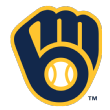
Milwaukee Brewers
The trade: Jeff Cirillo and Scott Karl to the Rockies for Jimmy Haynes (via Oakland), Jamey Wright and Henry Blanco (Dec. 13, 1999)
Others to consider: George Scott, Zack Greinke, Carlos Gomez
Jeff Cirillo? Yes, Jeff Cirillo. Let me explain. The Brewers have had three longtime stars in franchise history: Robin Yount, Paul Molitor and Ryan Braun. Yount and Braun (so far) played their entire careers with the Brewers, while Molitor left as a free agent. Who is the fourth-best player in Brewers history? In time, it might be Christian Yelich, but right now via career WAR with the team, it's Cecil Cooper. Teddy Higuera is right behind him. Both finished their careers in Milwaukee. The Brewers just haven't had many truly great players roll through town.
Greinke? He had won a Cy Young for the Royals in 2009 and would contend for one after going to the Dodgers in 2013, but in the intervening years he was more good than dominant. Gomez? He had been an All-Star in 2013 and 2014 and his 2013 WAR was 7.6 thanks to some off-the-charts defensive metrics, but he was struggling at the plate when the Brewers traded him midseason of 2015. Scott? He led the AL in home runs and RBIs in 1975 but fell off in 1976 and was getting old when the Brewers swapped him for Cooper of the Red Sox in a steal of a deal. That leaves us with Cirillo. He averaged 5.4 WAR from 1997 to 1999, hit over .300 with .400 OBPs in '98 and '99 and was a good defensive third baseman.
Did the trade pan out? Not really. These were some dark years for the Brewers as 1999 came in the middle of 12 consecutive seasons of finishing under .500. GM Dean Taylor was looking for pitching, but Haynes was coming off a 6.34 ERA with the A's and Wright had a career 5.57 ERA at the time of the deal. Haynes went 20-30 in two seasons with Milwaukee and Wright went 23-34 in two-plus seasons.

Minnesota Twins
The trade: Rod Carew to the Angels for Ken Landreaux, Dave Engle, Brad Havens and Paul Hartzell (Feb. 3, 1979)
Others to consider: Goose Goslin, Bert Blyleven, Frank Viola, Chuck Knoblauch, Johan Santana
The Twins have a lengthy history of trading away stars, primarily because they have been unwilling to pay them. Longtime owner Calvin Griffith was both a cheapskate and a racist. (At a function in 1978, he said he had moved the team from Washington, D.C., to Minnesota because Minnesota didn't have many Black people.) At the same gathering, he called Carew a "damn fool" for signing a three-year contract with the Twins. Carl Pohlad, who made his initial fortune in the banking business foreclosing on farms during the Great Depression, did win two World Series but was willing to contract the team in 2001 for a $150 million buyout.
You could make a case for any of these players as the best Twin to be dealt. Based on two-season WAR prior to getting traded (Blyleven, Viola and Goslin were traded in-season, so we'll include the previous two), the order would go:
Viola: 15.8
Knoblauch: 15.5
Carew: 14.7
Blyleven: 13.8
Santana: 12.6
Goslin: 10.3
Viola had won the Cy Young Award in 1988 but was dealt to the Mets at the trade deadline in 1989. Viola had signed a three-year extension with the Twins after a heated negotiation, but when he got off to a slow start, Twins fans booed him (including at a circus he attended with his family) and ownership remained bitter about having to actually pay their star pitcher. GM Andy MacPhail made an excellent trade: He got starter Kevin Tapani and closer Rick Aguilera, two keys to the 1991 World Series title.
But I'm going with Carew, who was one of the biggest names in the sport. The 1977 AL MVP after hitting .388, he had won his sixth batting title in seven seasons in 1978, also leading the AL in on-base percentage. Carew was entering the final year of his contract and the episode cited above had infuriated him. Speaking of Griffith, he was quoted as saying, "He respects nobody and expects nobody to respect him. Spit on Calvin Griffith." For his part, Griffith wanted to get something for Carew before he headed into free agency.
Did the trade pan out? While the Twins did end up trading Carew at the right time -- he was entering his age-33 season and never won another batting title -- the four players they received in return never did much with the Twins. All four had major league careers, but the only winning year the Twins had between 1979 and 1986 was an 82-80 season in '79. Griffith sold the team in 1984.

New York Mets
The trade: Tom Seaver to the Reds for Pat Zachry, Steve Henderson, Doug Flynn and Dan Norman (June 15, 1977)
Others to consider: R.A. Dickey
Forty-three years later, Mets fans of a certain age still shed tears when they think of the day a no-good idiot -- in their minds -- named M. Donald Grant traded the biggest icon in franchise history. Seaver and Grant, the Mets' chairman, had been feuding since 1976, when Seaver signed a three-year contract for $225,000 per season after a bitter negotiation. With the onset of free agency after the 1976 season, other pitchers soon surpassed Seaver's annual salary -- none of whom had won three Cy Young Awards -- and Seaver realized he had misjudged his value and wanted to renegotiate.
Things got ugly. Seaver accused Grant of planting a negative story about Seaver's wife with columnist Dick Young. Seaver even called Grant a "lunatic" and years later told the story that Grant once confronted him, upset that Seaver had the audacity to apply for membership at a prestigious golf club in Greenwich, Connecticut. Seaver essentially forced the Mets' hand and approved four clubs for a trade: the Reds, Dodgers, Phillies or Pirates (the four best teams in the National League). At the 1977 trade deadline -- it was June 15 in those days -- the Mets took Cincinnati's offer. Young wrote a scathing column, calling Seaver "greedy" and writing that a man "lives up to his contract."
Did the trade pan out? No. Zachry was Rookie of the Year in 1976 but went 41-46 with a 3.63 ERA in six seasons with the Mets. Henderson had four average seasons before he was traded away. It wasn't a zero return, but the Mets, who had won 86 games in 1976, suffered seven straight 90-plus-loss seasons (including a pro-rated total for 1981) from 1977 to 1983. Shea Stadium became known as "Grant's Tomb," and Grant was mercifully ousted after the 1978 season.

New York Yankees
The trade: Rickey Henderson to the A's for Luis Polonia, Eric Plunk and Greg Cadaret (June 21, 1989)
Others to consider: Joe Gordon, Bobby Bonds, Alfonso Soriano, Aroldis Chapman
Unlike their rival Red Sox, the Yankees have a rather mundane history of trading star players. Henderson takes the crown, as he was still one of the best players in the game when the Yankees traded him back to Oakland. The trade was somewhat understandable: Henderson was a pending free agent and the Yankees were 33-36 at the time, 7½ games out of first place. "I personally wasn't thrilled hearing it because I thought we were having trouble scoring runs," Yankees reliever Dave Righetti said. "Obviously, they didn't want to pay him what he was asking."
The trade came at the end of a long run of mismanagement -- the Yankees traded Fred McGriff, Willie McGee, Doug Drabek and Jay Buhner in the decade. Syd Thrift was the interim GM at the time and engineered the Henderson deal, getting three major leaguers in return instead of prospects -- two relievers and a platoon outfielder.
Did the trade pan out? No. The Yankees finished under .500 in 1989 for the first time since 1973 -- and would do so the next three seasons as well, the low point in Yankees history over the past 100 years. Polonia was gone within a year, and Plunk and Cadaret combined for less than 5 WAR with the Yankees. Henderson re-signed with the A's and won the MVP award in 1990.
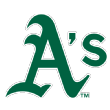
Oakland Athletics
The trade: Josh Donaldson to the Blue Jays for Brett Lawrie, Franklin Barreto, Kendall Graveman and Sean Nolin (Nov. 28, 2014)
Others to consider: Eddie Collins, Home Run Baker, Al Simmons, Lefty Grove, Jimmie Foxx, Reggie Jackson, Rickey Henderson, Mark McGwire
You can criticize this selection, considering I just listed seven Hall of Famers and Mark McGwire, who was chasing the homer record. Donaldson, however, was at their level when he was traded, and it's one of the most unusual deals on this entire list. Anyway, thanks to Connie Mack's two great sell-offs, primarily for cash -- breaking up the 1910-14 A's, who appeared in four World Series in five years (winning three) and the 1929-31 club that appeared in three straight (winning two) -- the A's have traded more in-their-prime superstars than any team. Heck, the above list doesn't even include secondary stars like Vida Blue, Jose Canseco, Mark Mulder and Tim Hudson.
Going strictly by the numbers, we would go with Collins, who was the reigning Chalmers Award winner as MVP when Mack sold him to the White Sox for $50,000 after the 1914 season. Here are the two-season WAR numbers prior to the trade for each player (McGwire's second figure is for his entire 1997 season):
Collins (dealt after 1914): 9.0, 9.1 (MVP)
Baker (1915): 7.9, 7.4
Simmons (1932): 7.5, 4.2
Grove (1933): 9.5, 8.4
Foxx (1935): 8.6, 8.1
Jackson (1975): 5.7, 6.7
Henderson (1984): 6.9, 6.0
McGwire (midseason 1997): 6.4, 5.1
Donaldson (2014): 7.2, 6.9
Donaldson stacks up pretty well, especially against the modern players, and he had finished fourth and eighth in the MVP voting in 2013 and 2014. No, he wasn't as famous as Reggie or Rickey or Big Mac, but he was just as good. It was a weird trade, even for the penny-pinching A's. While superstars are often traded entering their final season before free agency, the A's still had Donaldson under team control for four more seasons. Donaldson's OPS had slipped from .883 in his 2013 breakout to .798 in 2014, but offense was down across the league. He was also turning 29. No doubt the A's saw a player their analysis suggested had already peaked. They were wrong.
Did the trade pan out? Nope. Donaldson won the 2015 MVP and helped the Blue Jays to back-to-back playoff berths, their first since 1993. Lawrie, the one proven player in the deal, was a bust, lasting one season in Oakland with a .299 OBP. Barreto was a top prospect but hadn't played above short-season Class A. He has yet to pan out.

Philadelphia Phillies
The trade: Pete Alexander and Bill Killefer to the Cubs for Pickles Dillhoefer, Mike Pendergrast and $55,000 (Dec. 11, 1917)
Others to consider: Chuck Klein, Dick Allen, Scott Rolen, Cliff Lee
I hate to go back 103 years, considering the Phillies do have some other interesting trades in their history, but Alexander was the best pitcher in the National League at the time, having led the league four straight years in wins, innings and WAR (retroactively, of course!), and two of the previous three seasons in ERA. Plus, the deal includes a guy named Pickles and this headline from the Lancaster New Era paper: "President Baker Disposes of His Star Battery in Exchange for Two Bushers and a Big Bunch of Ready Money. A Jolt to World of Base Ball."
Here's what's really compelling about this trade, however: It sounds like something straight out of 2020-21. With U.S. involvement in World War I starting to ramp up, owners were worried about what was going to happen to the 1918 season. "That the sale of these players is really a war measure is the general opinion of base ball men. It is evident baseball magnates expect a lean season in 1918 and are preparing for it," wrote the Lancaster paper. "Last season the club paid $99,000 in salaries and claims to have made no money. It is believed every club in the league plans to cut its salary list almost in half to meet the issue."
Change the dollar values and those words could be heard from any number of teams this offseason -- just substitute "pandemic" for "war."
Did the trade pan out? No. The Phillies also expected Alexander to get drafted into the Army -- and they were right. He did, making just three starts for the Cubs in 1918 (although he returned and led the NL in ERA in 1919 and 1920 and pitched many more seasons). The Phillies, a World Series team in 1915 and 87-65 in 1917, never recovered from the trade, falling to 55-68 in 1918 -- the first of 14 consecutive losing seasons (and a remarkable run of 30 losing seasons in 31 years through 1948).
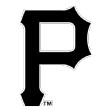
Pittsburgh Pirates
The trade: Ralph Kiner and three other players to the Cubs for six players and $150,000 (June 4, 1953)
Others to consider: Kiki Cuyler, Bert Blyleven, Brian Giles, Jason Bay
Kiner was the game's preeminent slugger in the late 1940s and early '50s, leading the National League in home runs his first seven seasons in the league (1946 to 1952), including two 50-homer seasons. At the time, the Pirates were awful, leading to the perhaps apocryphal line from general manager Branch Rickey about Kiner, "We finished last with you, we can finish last without you."
Kiner, meanwhile, had become a star off the field, hobnobbing with Hollywood celebrities thanks to his friendship with Pirates minority owner Bing Crosby. In 1949, he escorted a 17-year-old Elizabeth Taylor to the premier of the Gregory Peck film "12 O'Clock High," and in 1951 he married glamorous tennis star Nancy Chaffee.
Rickey, who took over the Pirates after the 1950 season, hated Kiner, preferring athletic players to the plodding outfielder. Before the 1952 season, with the two sides haggling over a new contract, he wrote a memo to the team's owner detailing his assessment of Kiner that included this poem of sorts:
"Babe Ruth could run. Our man cannot.
Babe Ruth could throw. Our man cannot.
Babe Ruth could steal a base. Our man cannot.
Babe Ruth is a good fielder. Our man is not.
Ruth could hit with power to all fields. Our man cannot.
Ruth never requested a diminutive field to fit him. Our man does."
Rickey's view may have been a little harsh, but Kiner did fall off in 1952, hitting .244 with 37 home runs, and the Pirates lost 112 games. Kiner was now 30, and it was finally time to trade him, especially after another contract dispute heading into 1953 that led to Kiner holding out -- he finally accepted a 15% pay cut instead of the 25% Rickey wanted to give him. (Indeed, if not for Jackie Robinson, Rickey's lasting legacy would be for being cheap more than anything else.) When the trade was made, the shock wasn't Kiner leaving Pittsburgh but that the Pirates also included three other players, including Joe Garagiola, the team's top catcher.
Did the trade pan out? Not for either team. A 25-year-old outfielder named Preston Ward was the main guy the Pirates wanted (aside from the cash), but he was never more than a part-time player for Pittsburgh. The Cubs, meanwhile, fielded one of the worst defensive outfields of all time in 1953, with Kiner in left, 34-year-old Frank Baumholtz in center and 36-year-old Hank Sauer in right. They finished 65-89, and Kiner's bad back forced him into early retirement after the 1955 season.

St. Louis Cardinals
The trade: Rogers Hornsby to the New York Giants for Frankie Frisch and Jimmy Ring (Dec. 20, 1926)
Others to consider: Joe Medwick, Johnny Mize, Dick Allen, Steve Carlton, Ted Simmons, Keith Hernandez
Well, we meet again, Mr. Hornsby. If you've skipped through this piece and bypassed the Braves entry up above, we mentioned that Hornsby had just won the 1926 World Series as player/manager of the Cardinals when he got into a contract dispute with owner Sam Breadon -- er, yet another contract dispute, a regular occurrence between Hornsby and the Cardinals. (I mentioned up top that the history of baseball is star players squabbling with owners over money. Don't believe the old-timers when they tell you players used to play just for the love of the game.) Hornsby had one season remaining on his deal but wanted a three-year contract for $50,000 per season. Breadon countered at one season at $50,000 and the provision that Hornsby stay away from the horse tracks.
Keep in mind that Hornsby was probably the second-biggest star in the game behind Babe Ruth. Indeed, the report the day after the trade in The New York Times said it "brings to this city the second of the two outstanding figures of the sport." Hornsby had spent 12 seasons with St. Louis, winning six batting titles (including three .400 seasons) and the 1925 MVP award, and he had just won the World Series, the first in franchise history. Breadon had simply grown tired of Hornsby's act -- not just the contract demands but the gambling and, as Hornsby's SABR biography reads, "his bluntness and complete lack of diplomacy." As great as Hornsby was, three teams in three years would decide that they were better off without him.
Making it a little easier for the Cardinals to deal him, however, was that he had an off year at the plate in 1926, hitting just .317 with his home runs falling from 39 to 11 (he had played through some injuries). Frisch, the second baseman for John McGraw's Giants, also was a big star, although not at Hornsby's level. He and McGraw had a falling-out during the 1926 season -- Frisch even left the team for a short time -- and their relationship was now beyond repair. Initial reports suggested that the Giants must have included at least $100,000 to bridge the gap between the two players, but the Cardinals denied that any money exchanged hands. It goes down as one of the biggest challenge trades of all time: Two Hall of Fame second basemen flipped for each other.
Did the trade pan out? Yes, for the Cardinals. Hornsby continued to hit, but predictably he and McGraw didn't get along and the Giants traded him after one season. He won another batting title in 1928 with Boston and the MVP in 1929 with the Cubs, but injuries set in after that. He was worth 36.7 WAR the remainder of his career. Frisch was worth 33.2 WAR, all with St. Louis, and helped the Gashouse Gang win the World Series in 1931 and again in 1934, when he was player-manager.

San Diego Padres
The trade: Gary Sheffield and Rich Rodriguez to the Marlins for Trevor Hoffman, Andres Berumen and Jose Martinez (June 24, 1993)
Others to consider: Ozzie Smith, Roberto Alomar, Fred McGriff, Adrian Gonzalez
Ozzie and Alomar are Hall of Famers, but they had not reached their peak when the Padres traded them early in their careers. Gonzalez was one of the best hitters in the game when the Padres traded him to the Red Sox after the 2010 season. But we go back to the infamous 1993 fire sale when Sheffield and McGriff were traded midseason as part of owner Tom Werner's slash-and-burn policy.
McGriff had led the NL in home runs in 1992, started the All-Star Game (which was held in San Diego) and finished sixth in the MVP voting. Sheffield had led the NL in batting average and total bases and chased the Triple Crown. (He might have won, but he missed the final six games after breaking a finger.) He finished third in the MVP voting. While he struggled defensively at third base in 1993 (he would finish with an .899 fielding percentage), he was just 24 and the bat was ferocious.
Padres fans were incensed with the trade, especially since ownership had promised in a letter to season-ticket holders to keep Sheffield. "You can't print what people are saying here," a sports talk radio host said at the time. "There's a feeling of total disbelief and anger with the Padres' organization." Tony Gwynn, the one star the Padres kept, was not happy. "No, I do not think it was a baseball deal," he said. "To see Sheffield go just crushes you. He's 24. He's everything you're looking for in a franchise player."
Did the trade pan out? I guess so. The McGriff deal to the Braves a month later was a disaster (the return was Melvin Nieves, Donnie Elliott and Vince Moore), but the Padres did pick up one of the greatest closers of all time for Sheffield. Hoffman had just 35⅔ innings in the majors at the time of the trade, and while you don't really want to trade a young superstar slugger for a reliever, the Padres at least got value in return.

San Francisco Giants
The trade: Gaylord Perry and Frank Duffy to the Indians for Sam McDowell (Nov. 29, 1971)
Others to consider: Frankie Frisch, Rogers Hornsby, Orlando Cepeda, Bobby Bonds, Matt Williams
We could have chosen Rogers Hornsby here, which would make him the best player traded by the Braves, Cardinals and now the Giants. He did hit .361/.448/.586 in his one season with the Giants, worth an estimated 10.2 WAR. As mentioned above, however, McGraw was eager to get rid him after just one season, trading him for minimal return.
Instead, let's go with Perry to give us a San Francisco player -- and one of the all-time great challenge trades, the kind of deal you no longer see. Some background: Horace Stoneham was the owner who moved the Giants from New York to San Francisco in 1958. Chub Feeney had been his longtime general manager and the Giants had been competitive throughout the 1960s, but Feeney left after the 1969 season to become president of the National League. Stoneham took over as GM -- and proceeded to make a series of blunders over the next several years.
The 1971 Giants won the NL West and Perry went 16-12 with a 2.76 ERA, pitching 280 innings and tossing 14 complete games. Maybe Stoneham thought he was getting old, since Perry had averaged 327 innings and 24 complete games the previous two seasons. McDowell, one of the hardest throwers in the game's history, had led the American League five times in strikeouts but went 13-17 with a 3.40 ERA in 1971 -- with drops in innings (305 to 214) and strikeouts (340 to 192) and a big increase in walks (3.9 per nine innings to 6.4). Due to a complicated contract dispute, McDowell had also left the team twice during the season.
The Giants ignored those warning signs and saw a pitcher who was four years younger than Perry. It did make sense to get younger -- Perry, Willie Mays, Willie McCovey and Juan Marichal, the stars of the '60s teams, were all in their 30s. Immediate reports on the trade suggested fans in San Francisco were upset. Fans in Cleveland didn't like it either.
Did the trade pan out? It was a disaster. McDowell came down with a sore shoulder halfway through the 1972 season and pitched just 164 innings. His drinking -- well known in baseball circles -- had become a problem. "The last four years of my career, I was a full-blown, third-stage alcoholic," he later said. He won just 11 games with the Giants and was out of baseball after 1975. Perry, meanwhile, pitched 213 innings in 1972 -- in the first half of the season. For the year, he finished 24-16 with a 1.92 ERA over 342⅔ innings, winning the AL Cy Young Award. He would win 180 games after the trade. Giants attendance, 1.1 million in 1971, fell off to 522,000 in 1975, and Stoneham was forced to sell the club.
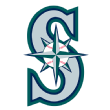
Seattle Mariners
The trade: Ken Griffey Jr. to the Reds for Mike Cameron, Brett Tomko, Antonio Perez and Jake Meyer (Feb. 10, 2000)
Others to consider: Randy Johnson
After 11 seasons with the Mariners, Griffey was still one of the biggest stars in the game and just 30 years old, but he turned down an eight-year contract extension for $135 million and requested a trade to a team closer to his home in Orlando, Florida. The Mariners had little choice but to consider the unthinkable: trading Junior. Griffey initially had four teams on his list but eventually narrowed it down to just Cincinnati. After a protracted negotiation with Reds GM Jim Bowden that lasted all winter, Mariners GM Pat Gillick finally traded Griffey, who signed a below-market nine-year, $116.5 million deal with Cincinnati.
The immediate reaction was that the Reds were the big winners, particularly because they had not given up Sean Casey or Pokey Reese. Even Tomko was stunned. "It's like being traded for [Michael] Jordan," he said. Gillick said the Mariners made the best trade they could. "When [Griffey] reduced it from four [teams] to one, that cut a little bit of our leverage," he said. "Under the circumstances, we did quite well."
Did the trade pan out? Yes ... for the Mariners. Griffey was often injured during his nine seasons with the Reds and they had just one winning season with him (his first one, when he hit 40 home runs). He was worth just 20.4 WAR over nine years. Cameron was the only player to work out for Seattle, but he compiled 18.4 WAR in four seasons and Seattle won 90-plus games all four years.
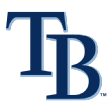
Tampa Bay Rays
The trade: David Price to the Tigers for Willy Adames, Drew Smyly and Nick Franklin (July 31, 2014)
Others to consider: Evan Longoria, Ben Zobrist
The Rays had made the playoffs in three of the previous four seasons, posting 90-plus wins all four years, but found themselves two games under .500 at the trade deadline in 2014 -- although they had gone 17-6 in July to climb to within eight games of first place. Andrew Friedman, in his last major move before leaving after the season to run the Dodgers, decided to trade Price even though he had another year before being eligible for free agency.
Did the trade pan out? Yes. It took a few years, as Adames was in Low A when he was traded, but he's turned into a solid shortstop, with a 4.2-WAR season in 2019 and 1.6 over 54 games in 2020. Smyly pitched two-plus seasons for the Rays and was traded to Seattle for Mallex Smith and Ryan Yarbrough. Smith had two productive seasons and was traded back to Seattle for Mike Zunino (and pitcher Michael Plassmeyer, who had a 1.91 ERA in the minors in 2019). The Price trade tree will undoubtedly live on in a year or two, when Adames is traded to clear room for Wander Franco.
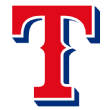
Texas Rangers
The trade: Alex Rodriguez (and cash) to the Yankees for Alfonso Soriano and Joaquin Arias (Feb. 16, 2004)
Others to consider: Bert Blyleven, Juan Gonzalez, Mark Teixeira
If you don't factor in salary, you can argue that A-Rod was the most valuable trade asset ever dealt away: a 28-year-old shortstop who had averaged 52 home runs and 132 RBIs in his three seasons with the Rangers, was coming off an MVP season and was under contract for seven more years. Of course, his contract is the reason the Rangers traded him away. The Rangers had finished in last place all three seasons, and with $179 million remaining on a 10-year, $252 million deal, they were desperate to shed Rodriguez's salary. They even included $67 million in cash to help pay down the remaining contract. The deal with the Yankees came together after a December agreement with the Red Sox fell apart when the players' union failed to approve a restructuring of Rodriguez's contract.
Yankees owner George Steinbrenner's simple assessment of the trade: "He'll be very big in New York."
Did the trade pan out? According to reports at the time, the Rangers selected the second player from a list of five Yankees minor leaguers. One of those prospects: Robinson Cano. They instead went with Arias. Soriano, meanwhile, had two All-Star seasons with Texas and was traded for Brad Wilkerson, a deal that did not work out. It can perhaps be argued that shedding A-Rod's salary helped the Rangers in their rebuild that culminated with World Series appearances in 2010 and 2011, but that success was so far removed from 2004 that it's difficult to posit that as a direct link.
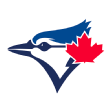
Toronto Blue Jays
The trade: Roger Clemens to the Yankees for David Wells, Homer Bush and Graeme Lloyd (Feb. 18, 1999)
Others to consider: Fred McGriff, Roy Halladay
"Yankees Subtract a Star but Add a Legend," read the headline above Buster Olney's story in the New York Times. The trade, at the outset of spring training, was shocking. After two seasons in Toronto when he won two Cy Young Awards and was the best pitcher on the planet -- a considerable achievement at the time given that Pedro Martinez, Greg Maddux and Randy Johnson were in their primes -- Clemens had asked for a trade with two years remaining on his contract. The Blue Jays had won 88 games in 1998, but Clemens did not like the direction of the club. While Clemens later rescinded his trade demand, Blue Jays GM Gord Ash was determined to trade his ace and wanted a proven left-hander rather than prospects. The deal with the Yankees came together in less than 10 hours.
Did the trade pan out? Yes, no, not really. Wells went 37-18 with a 4.47 ERA in two seasons with the Blue Jays and was then traded to the White Sox (nobody in that deal panned out). Clemens went 27-18 with a 4.13 ERA his first two years with the Yankees, so you can argue that Wells performed at least as well as Clemens (although the Yankees did win the World Series in 1999 and 2000). The Blue Jays, however, fell from 88 wins in 1998 to 84 and then 83, and perhaps a trade for prospects would have been the way to go.
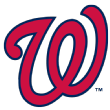
Washington Nationals
The trade: Pedro Martinez to the Red Sox for Carl Pavano and Tony Armas (Nov. 18, 1997)
Others to consider: Gary Carter
Sorry to go back into Expos history here, but the Nationals simply haven't traded away any star players. Carter was the best catcher in the game, one of the best players in the game, when the Expos traded him to the Mets after the 1984 season. He had just led the NL in RBIs. He had started the past four All-Star Games. Only Mike Schmidt had more WAR since 1977 and only Robin Yount had more from 1982 to '84. WAR didn't exist back then, but everyone would have agreed: Carter was one of most valuable players in baseball. He was turning 31, however, and had been worked heavily behind the plate. Not counting the 1981 strike season, he had caught at least 134 games every season since 1977.
In 1997, Pedro had just won his first Cy Young Award, a transcendent season in which he went 17-8 with a 1.90 ERA, 13 complete games and 305 strikeouts -- right in the heart of the steroid era. In comparing him with Carter, you can point to it being Pedro's first great season, but he was so dominant and had so clearly taken his game to a new level that I'm giving him the edge over Carter. With one season left until free agency and no chance of signing him, the Expos figured they had better cash in. The prize was Pavano, who was Baseball America's No. 9 overall prospect at the time. The Red Sox immediately signed Martinez to a six-year, $75 million contract with a seventh-year option.
Did the trade pan out? For the Expos? Not so much. Pavano would go on to a solid career with 108 wins, but he battled injuries early on with Montreal and the Expos traded him in 2002 to the Marlins (where he helped them win the 2003 World Series). Armas went 48-60 and was with the organization when it left Montreal. For the Red Sox? It remains one of the greatest deals in the history of any franchise. Maybe that's the moral of this whole piece: Most of these trades didn't work out. Superstars are a good thing to have on your team.
